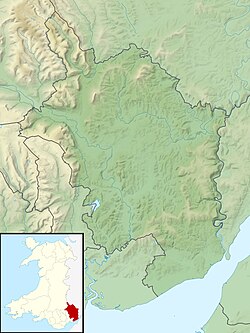History
Sir Joseph Bradney described Wern-ddu as "in its origins one of the oldest in the county". [1] He ascribed the original building to the Herbert family. Cadw considers the current building to date from the early 17th century, [1] while the architectural historian John Newman places it somewhat later, in the late 17th century. Sir Cyril Fox and Lord Raglan, in the second of their three-volume history of vernacular architecture Monmouthshire Houses , give a date of c.1675. Wern-ddu was reconstructed in the 18th, 19th and 20th centuries and Bradney recorded in the early 20th century that "it shows but little of its antiquity". [1] It remains a private house.
The historical importance of the house was long recognised. The American journalist and diplomat Wirt Sikes, United States consul at Cardiff in the 1870s and 1880s, recorded an encounter between its last hereditary owner, Roger ap Probert, and a stranger, in his Rambles and Studies in Old South Wales, published in 1881. Questioned as to the history of the house, Probert replied; "Werndu (is) a very ancient house. Out of it came the Earls of Pembroke, the Lords Herbert of Cherbury, the Herberts of Coldbrook, the Joneses of Treowen and Llanarth and all the Powells; also, by the female line, came the Dukes of Beaufort".
This page is based on this
Wikipedia article Text is available under the
CC BY-SA 4.0 license; additional terms may apply.
Images, videos and audio are available under their respective licenses.

